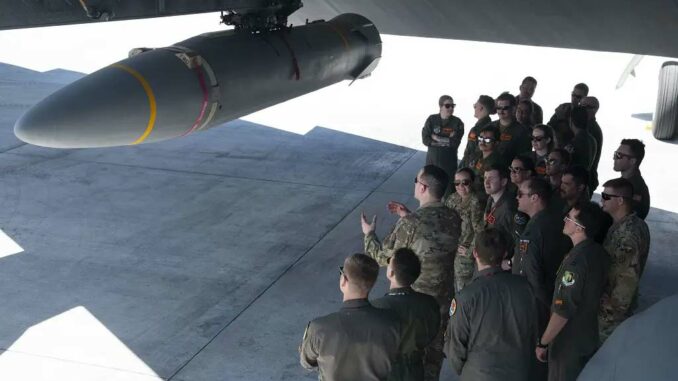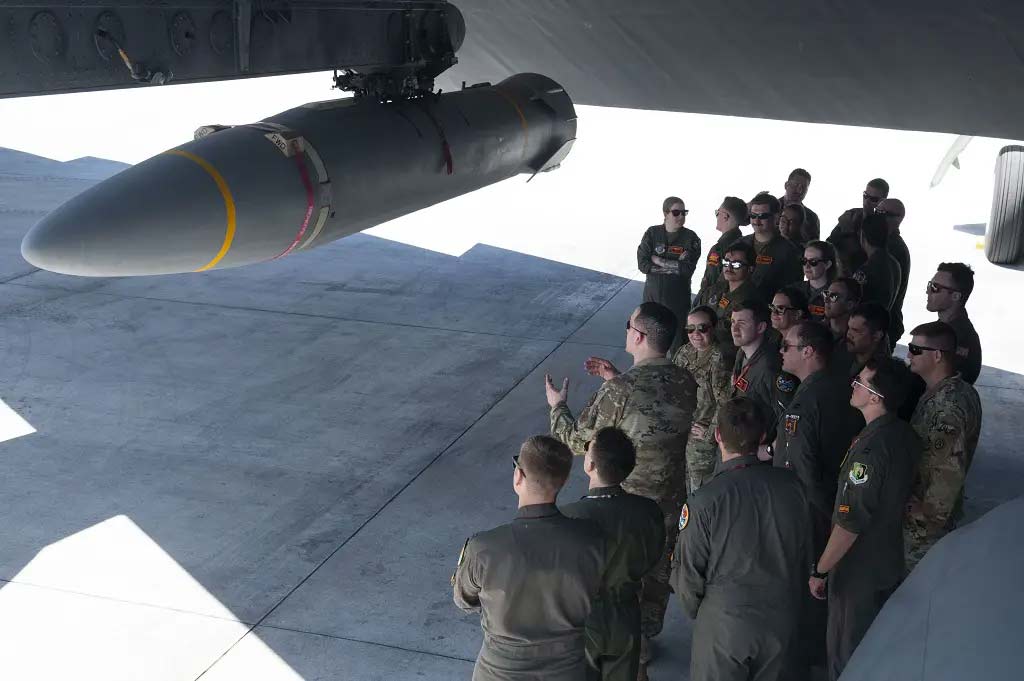
Find out about training with the ARRW missile in Guam, a milestone for the US Air Force despite technological challenges, and its strategic importance in the Indo-Pacific region.
The US Air Force recently highlighted significant training at Andersen Air Force Base in Guam, involving the AGM-183 Air-launched Rapid Response Weapon (ARRW) hypersonic missile mounted on a B-52H. This familiarization session with the hypersonic weapon underlines Guam’s strategic importance and ongoing efforts, despite the termination of the ARRW program, in a context of increased technological competition, notably with China.
Context and strategic stakes
Strategic presence in Guam
Guam occupies a crucial strategic position in the Indo-Pacific region, making the island a focal point for the United States, especially given its proximity to China. This first appearance of an American hypersonic weapon on Guam raises important strategic questions, reflecting a potential demonstration of strength and capability in a geopolitically sensitive area.
The Hypersonic Challenge
Although the United States is perceived as lagging behind China in hypersonic technology, the Department of Defense is striving to rapidly deploy operational systems. The multiple programs underway, despite their setbacks, testify to the commitment to catching up and securing a strategic advantage in this new weapons frontier.

The ARRW Program and its Implications
Advances and setbacks
The initially promising AGM-183 ARRW missile encountered several failures, leading the Air Force to abandon its post-prototyping acquisition. Nevertheless, the continuation of test flights is considered beneficial, as the data gathered should inform future hypersonic programs.
Training and operational readiness
Crew training in Guam underlines the importance placed on understanding hypersonic weapons, essential for increasing operational readiness in the face of rapidly evolving threats. This training aims to prepare various air communities for the future integration of such capabilities.
Technology and future prospects
Technological Innovations
The AGM-183A ARRW is based on hypersonic gliding vehicle technology, capable of speeds up to Mach 15. This capability represents a significant leap forward in terms of offensive capabilities, promising sufficient kinetic impact to neutralize targets without the need for conventional explosives.
Development challenges
The continued development of hypersonic systems, despite the challenges, is crucial to maintaining US military competitiveness. The exploration of new air vehicle configurations and scramjet propulsion is evidence of investment in technologies capable of sustained hypersonic cruise and management of high-temperature thermal stresses.
Training with the ARRW missile at Guam represents more than just a military exercise; it embodies the United States’ strategic efforts to hone its hypersonic capabilities against technologically advanced adversaries. Although the ARRW program faces an uncertain future, the lessons learned and data collected will play a crucial role in shaping future hypersonic weapons, underscoring the importance of perseverance and innovation in this competitive arena.
The ARRW hypersonic weapon training in Guam underscores the US Air Force’s strategic and technological commitment to the development of hypersonic capabilities, despite the challenges of the ARRW program, reflecting the security dynamics in the Indo-Pacific region and the global hypersonic arms race.
War Wings Daily is an independant magazine.